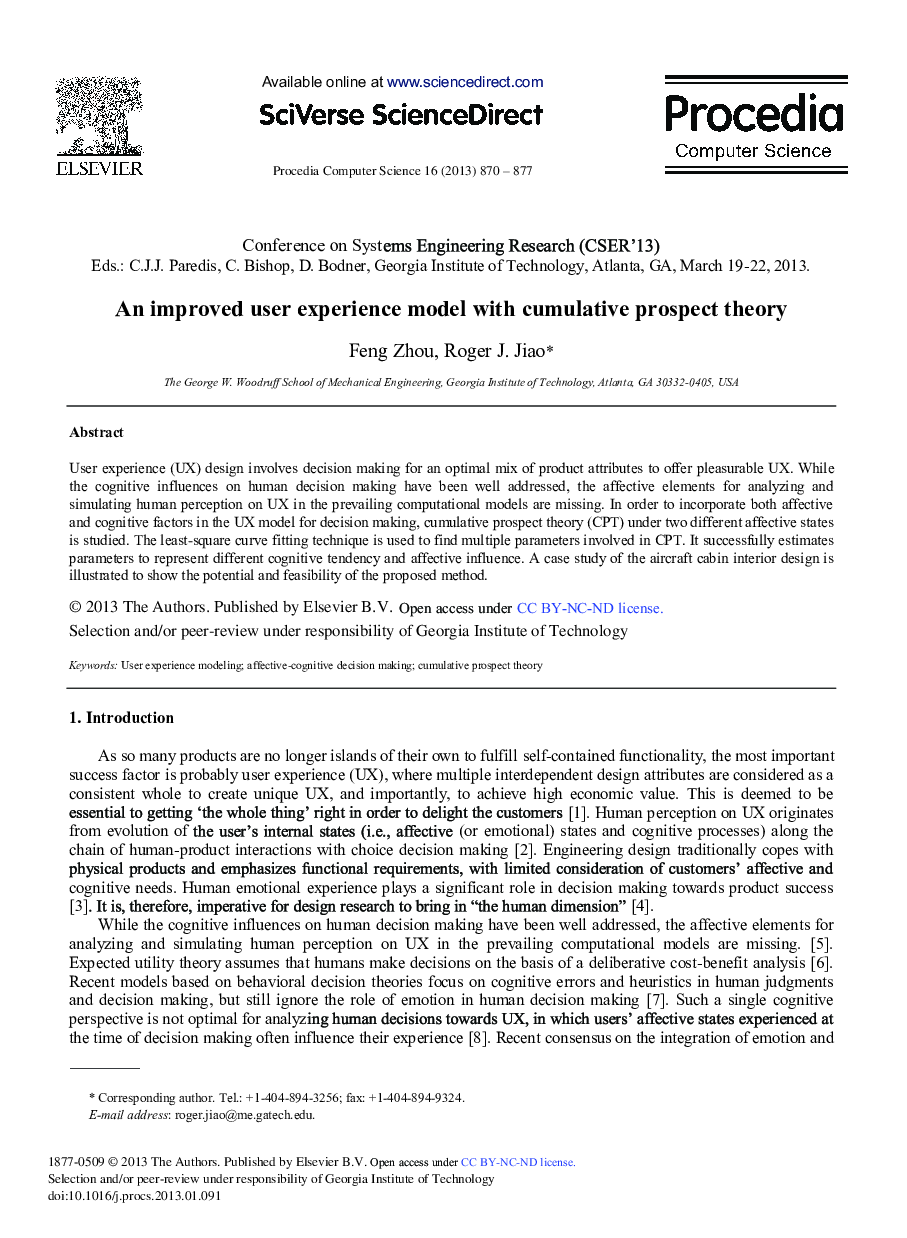| Article ID | Journal | Published Year | Pages | File Type |
|---|---|---|---|---|
| 486637 | Procedia Computer Science | 2013 | 8 Pages |
User experience (UX) design involves decision making for an optimal mix of product attributes to offer pleasurable UX. While the cognitive influences on human decision making have been well addressed, the affective elements for analyzing and simulating human perception on UX in the prevailing computational models are missing. In order to incorporate both affective and cognitive factors in the UX model for decision making, cumulative prospect theory (CPT) under two different affective states is studied. The least-square curve fitting technique is used to find multiple parameters involved in CPT. It successfully estimates parameters to represent different cognitive tendency and affective influence. A case study of the aircraft cabin interior design is illustrated to show the potential and feasibility of the proposed method.
